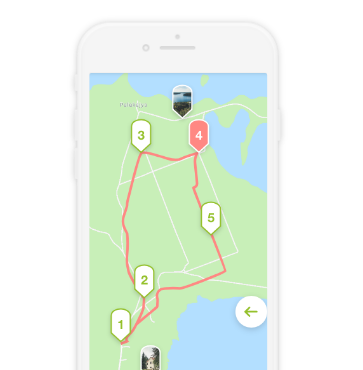Kelmė region invites You to get to know, discover and love the most famous archeological sites in Kelmė district, of which there are eighteen.
We recommend starting Your trip with archeological traces in Kelmė district from Tytuvėnai. Here is the Bridvaišis mound located in the lands of the Samogitian tribes, on a hill on the northern shore of lake Bridvaišis.
Another stop could be the Burbaičiai mound, which has an exceptional shape. According to the legend, in ancient times the mound of Burbaičiai was flooded by a giant: a giant of unparalleled size, once passed by this place, got tired and sat down to rest on the high shore of Kražantė. He then took off the wooden shoe, poured out the land from it and then it became a hill, which is now called Piliukas or Burbaičiai mound.
After looking at the panorama of this mound, You should visit another pearl of nature in the district - Pustlaukis pit. Pustlaukis pit is a deep drop-shaped pit that was dug by a steep and swirling stream of water falling from the edge of the glacier in the late ice age. The ice floe left in the pit further accentuated the shape of the relief, and when melted, it turned into a rather deep lake. Relatively recently, this body of water has turned into a swamp, there are still a few small aquariums left.
After visiting the Pustlaukis pit, You should drive almost a kilometer, and You will find another place to visit - the Gabriejolė mound, which is located in the Vainagiai forest near Gabriejolė village. The mound is overgrown with conifers, the site and the southeastern slope are rare. The mound dates back to the beginning of the first millennium.
The next stop could be in Pašilė. Here You could see an interesting, literally trace left by nature - the Pašilė stone with the "Foot of God". It is a mythological stone with a foot-like recess, also known as the Grab of the Lord God. The stone stands in the forest of Pašilė. It's protected archeological monument.
After reviewing the ‘‘Foot of God’’ we suggest continuing the journey in Kražiai which contain the legendary Medžiokalnis mound, which is also considered as a botanical reserve. The stories include the holy oak and holy water, which comes from under its roots, sacred fire and a statue of the goddess Medeinė. Every year, the St. John's Day is celebrated there, bonfires are burned, concerts and various other events are organized in Medžiokalnis, and if You visit this place, You will be able to take a walk around the wooded environment of the mound.
We suggest completing this trip around the archeological object of Kelmė district at the well-known object - Kriaučius stone, located in Vileikiai village. This boulder is the third largest in Lithuania. The length of the boulder reaches 7.84 meters, width - 7.65 m, height - over 4 m, maximum horizontal circumference - 23.2 m. The amazingly sized object will leave good memories after the visit.
On this route You will drive 150 kilometers and see even 18 natural objects.
























Reviews